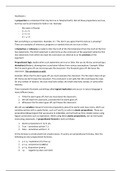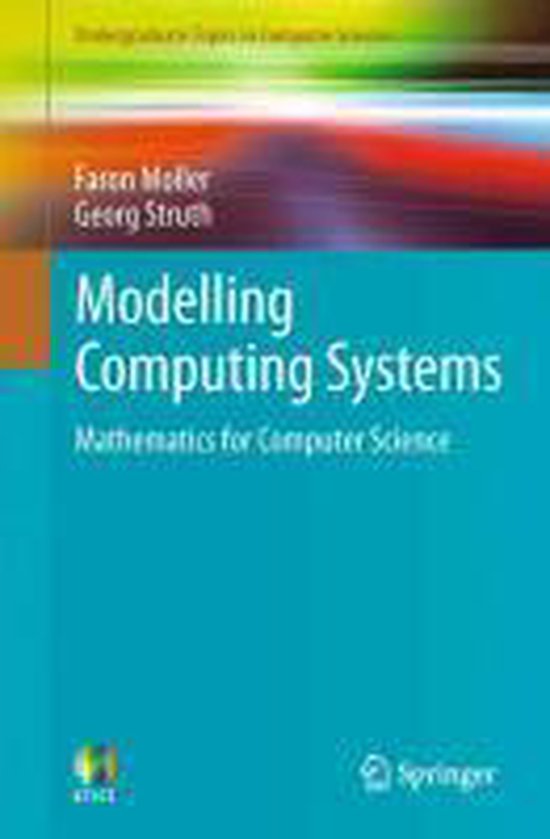Hoofdstuk 1
A proposition is a statement that may be true or false(not both). Not all these propositions are true,
but they can be all checked to hold or not. Exemple:
- My name is Wouter
- 2+3=5
- 2+3=6
- X+ y=9
Not everything is a proposition. Example: 2+= *34, Don’t you agree that this lecture is amazing?
These are examples of sentences, programs or symbols that are not true or false.
A Deduction or inference is made to infer the truth of the third statement from the truth of the first
two statements. The third statement is referred to as the conclusion of the argument while the first
two statements from which we draw the conclusion are referred to as the premises of the
argument.
Propositional logic studies when such statements are true or false. We can do this by constructing a
derivation(afleiden), showing how a conclusion follows from various assumptions. Example: When
the fire alarm goes off, we must evacuate the classroom. The firealarm goes off. We leave the
classroom. This conclusion is valid.
Example: When the fire alarm goes off, we must evacuate the classroom. The fire alarm does not go
off. Hence we don’t leave the classroom. This conclusion is not valid, No! We could leave the class
for any number of reasons: the class may have ended, the break may have started, or some other
calamity.
These examples illustrates something called logical implication and occurs in natural language in
many different ways:
1. If the fire alarm goes off, then we must leave the classroom.
2. We will leave the classroom, provided the fire alarm goes off.
3. Whenever the fire alarm goes off, we’ll leave the classroom.
We will use variables instead of concrete propositions about fire alarms and class rooms. We’ll use
variables written with a capital letter, such as P and Q, to refer to atomic propositions. These are
propositions(beweringen) that we assume to indivisible, and not built up from smaller pieces using
logical connectives such as implication. While using these atomic propositions, we can formulate
interesting statements. A propositional formula is built as follows:
1. Atomic propositions P, Q, R, etc.
2. True – sometimes written T, 1
3. False - sometimes written F, 0
Or the formula is constructed from smaller pieces. If p and q are propositional formulas, then the
following are also propositional formulas:
1. p ⇒ q, implication (if p then q)
2. p ∧ q, conjunction (p and q)
3. p ∨ q, disjunction (p or q)
4. ¬p, negation (p does not hold)
, We use variables starting with capital letters P to denote atomic propositions; lower case variables,
such as p, refer to (possible non-atomic) propositions. Variables such as p are not propositional
formulas themselves! Instead these are sometimes referred to as metavariables.
Syntax defines the structure of the proposition. Semantics studies the meaning of propositions.
The distinction between syntax and semantics shows up all the time. This text is a fragment of well-
formed C# code:
- int x = 14;
- int y = x + 12;
But this is not:
- xxb =[i'3[hxktz ;O;OIDL
We only can study the meaning (that is the
semantics) of code that has a valid syntax. But
we have no idea what the semantics of the
second example is!
Propositional formulas are defined as follows:
- Atomaire proposities P, Q, R
- True, truth, T, 1
- False, falsity, F, 0
- p ⇒ q, implication (if p then q)
- p ∧ q, conjunction (p an q)
- p ∨ q, disjunction (p or q)
- ¬p, negation (p does not hold)
P Q P => Q
F F T
F T T
T F F
T T T
There is a order for propositional logic (rekenregels):
1. Parentheses(haakjes)
2. Negation ¬
3. Conjunction ∧
4. Disconjunction ∨
5. Implication =>






